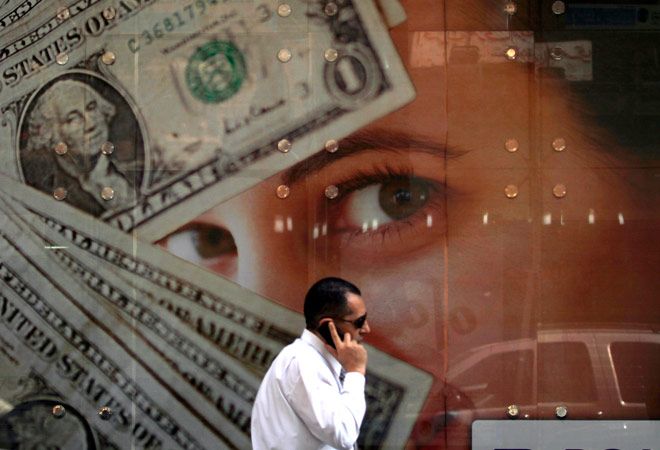
Analysts and traders, who did not expect a rate hike, were hoping for a clear sense of direction on the course of US interest rates, note Abheek Barua and Bidisha Ganguly
To figure out why financial markets aren't exactly swilling the bubbly after the US Fed Reserve's decision on September 17 not to hike interest rates, it might make sense to start with the expectations that had built up in the run-up to the policy meet.
While market economists were split down the middle on whether the Fed would hike interest rates, the Fed Fund futures markets were pricing in a pretty small probability of a rate hike.
Thus the Fed seemed to have pretty much acted in line with market expectations. What's the problem then?
The Fed's policy was not about a rate decision alone -- the guidance that went with it was equally important.
Analysts and traders, who did not expect a rate hike, were hoping for a clear sense of direction on the course of US interest rates.
They expected the Fed to prep the markets to absorb a slow, steady rise, perhaps starting from December.
What it got instead was more of the ambivalence and fetish for more and more data that has characterised its communication over the past year.
The confusion that the Fed created reflected a variety of things.
The most important change in the its communication was that the Fed both acknowledged that it was 'monitoring developments abroad' and seemed to put considerable emphasis on it in influencing its rate decision.
Historically, the Fed has been firmly focused on purely 'domestic' issues and its discussion of international spillover effects was always seen as a bit of a sideshow.
The change in emphasis has forced Fed-watchers to wonder whether the very model of determining rates is undergoing a fundamental change.
If it is, the lens through which the Fed policy is viewed, parsed and forecast will have to change.
Questions have also been raised about whether the Fed's decision is being seen to have been driven by the need to keep up sentiments in the financial market -- a convenient capitulation to the world of finance without a clear strategy for managing its own economic conditions.
The most important concern, however, is that the American monetary authority appears to have lost the plot when it comes to gauging the dynamics of its own economy.
It does not seem to have any coherent explanation as to why despite the sharp fall in the unemployment rate to 5.1 per cent, wage inflation is yet to pick up.
Besides, it has really no hypothesis to explain why despite a massive increase in disposable income (the bit that's left over after paying for fuel) consumer spending is low.
The slackness in wage growth consumer spending has meant that the inflation rate for the index that it targets is still below the two per cent goal.
How does one 'play' or 'hedge' the Fed's likely future stance?
There appears to be some consensus that it will hike the Fed Funds rate (the policy rate) in December and follow through with a gentle calibrated increase over the next couple of years to take it up to a little over two per cent by the middle or end of 2017. However, given the Fed's continuing waffle, this scenario might not quite pan out.
What seems certain though is that markets will remain on edge and extremely volatile for the next few months.
This is true of the US stock market as well as emerging markets such as India.
The Fed's reticence in hiking rates is being read by many analysts as admission of the fact that both the US economy and the emerging world led by China are weaker than some of the published numbers show.
The belief that the Fed knows something that lesser mortals don't is common.
Volatility implies two-way movements and while we could certainly see a lot of ups and downs going forward, the prospect of another fall in the rupee remains a possibility and needs to be hedged.
However any period of sustained calm is contingent on the Fed showing its hand and actually producing a rate cut or just being candid about the fact that it's unlikely to hike in the near future.
The image is used for representational purpose only. Photograph: Reuters












 © 2025
© 2025